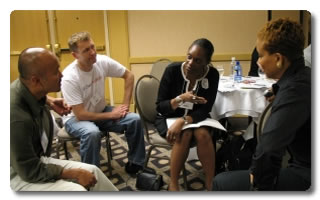I’m speaking tomorrow at the World Bank, which has some interest nowadays in the link between civic engagement and youth development. Basically, the idea is that investing in opportunities such as community service will benefit young people around the world, helping them to stay in school, avoid crime and disease, and generally flourish.
We know, indeed, that there are strong positive correlations between service and flourishing for Americans of all ages. Young people who volunteer do better in school; old people are less depressed. To some extent, success may cause volunteering. If you have more money and time, if you’re associated with better institutions, and if you have more confidence and initiative, you are more likely to conduct activities that we call “volunteering” or “service.” For instance, a full-time, white-collar worker may “volunteer” as part of an annual office outing, whereas a homeless person is unlikely to do something that would be called “volunteering” (although he might help his peers).
To an important extent, the reverse is true as well: volunteering contributes to flourishing. We know this from fairly careful studies, including studies of mandatory service (which avoid the problem that volunteers may be self-selected).
But this is the issue I’d like to raise at the World Bank: “volunteering” does not exhaust civic engagement. Citizens who want to change the world for the better may reasonably select other strategies, including voting, protest, building organizations, convening meetings, or even the age-old tactic of the oppressed, non-compliance. I often cite an example from a CIRCLE Working Paper by Michelle Charles. African American youth in Philadelphia are supposed to be cleaning up graffiti under the direction of middle-class adults. They are dragging their feet, presumably because they think this particular activity is pointless. To me, their service is not civic engagement, but their foot-dragging is. It may have the affect of ending the program, which will be positive social change.
These other forms of civic engagement are not correlated with prosperity and health. Protest, for example, is much more common among Latino and immigrant American youth than among White Anglo youth. That doesn’t mean that protest is bad for individual human development. I don’t think we know enough about its developmental effects (notwithstanding some important studies of 1960s activists). But it certainly could be the case that “volunteering” is good for social adjustment, and protest is bad for individual success, but good for society.
In other words, the strategy of encouraging youth to volunteer has a political agenda to it. Not being radical myself, I may be willing to endorse this strategy; but it’s worth arguing about. Certainly, many of the globe’s young people may resist the idea that they should be better accommodated to existing institutions through service.
